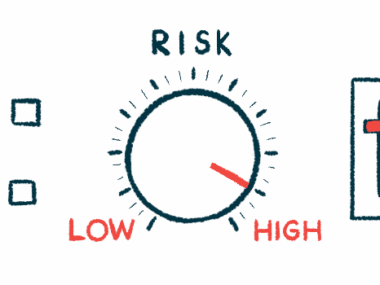Real-world study: Enspryng reduces NMOSD relapses over 6 months
With relapse rate of 5%, findings align with clinical trial rates
Written by |

Nearly all neuromyelitis optica spectrum disorder (NMOSD) patients who start taking Enspryng (satralizumab) are free of relapses after six months, according to interim data from an ongoing post-marketing surveillance study in Japan.
With a relapse rate of only 5% over six months, the findings were “comparable or lower than relapse rates previously reported in [Enspryng] clinical trials,” the researchers wrote. The study will continue to follow Enspryng-treated patients in a real-world setting for six years.
The study, “Safety and Effectiveness of Satralizumab in Japanese Patients with Neuromyelitis Optica Spectrum Disorder: A 6‐month Interim Analysis of Post‐marketing Surveillance,” was published in Neurology and Therapy by researchers in Japan.
NMOSD is an autoimmune disease marked by self-reactive antibodies being produced that attack cells that support the nervous system. This results in damaging inflammation in the spinal cord and optic nerve, which relays signals between the brain and the eye, causing problems with movement and vision.
In most patients, these self-reactive antibodies target the aquaporin-4 (AQP4) protein. IL-6, a pro-inflammatory signaling molecule involved in anti-AQP4 antibody production, is found at high levels in the fluid that surrounds the brain and spinal cord in NMOSD patients who have frequent relapses. Given that relapses are associated with accumulated, persistent disability, NMOSD treatment seeks to lower their number, while easing disease severity.
An approved treatment, Enspryng, blocks the receptor protein for IL-6. It’s given via injections under the skin, or subcutaneously, every four weeks.
It was cleared in Japan in June 2020 for treating and preventing relapses in NMOSD patients positive for anti-AQP4 antibodies, following positive data from SAkuraStar (NCT02073279) and SAkuraSky (NCT02028884), two Phase 3 clinical trials.
Safety, effectiveness of Enspryng over six months
Because the trials were conducted in a small, select number of patients, “it is necessary to examine if the safety and efficacy results of [Enspryng] can be translated to patients with NMOSD in a routine clinical setting,” wrote the researchers, who report data from a six-month interim analysis of an ongoing, post-marketing surveillance study (UMIN000041047) that’s following NMOSD patients given Enspryng across 234 centers in Japan for more than six years. The primary goal of the analysis is to assess the therapy’s safety. Effectiveness, as assessed by the relapse rate and the time to relapse, were secondary goals.
The study enrolled 575 Japanese NMOSD patients, 570 of whom were included in the interim safety analysis. Their mean age was 52.4, and most were women (91.75%) and positive for anti-AQP4 antibodies (98.24%). About half (48.42%) had other health conditions. Most (61.22%) had previously received immunosuppressive treatments. Nearly half (44.91%) had no relapses in the two years before starting Enspryng, while 8.95% had three or more relapses.
Enspryng was given along with glucocorticoids in 85.96% of patients and with immunosuppressive treatments in 48.59%. A total of 14.91% patients discontinued treatment, mostly due to adverse events.
Adverse reactions occurred in 20.7% of the patients after a mean of 54.6 days of treatment, and at a rate of 76.22 events per 100 person-years, which account for the total number of patients and the amount of time each patient is in the study.
Infections were the most common adverse event, with 13.58 events per 100 person-years in 28 patients (4.91%). Serious infections, most commonly affecting the respiratory and urinary tracts, occurred in 3.15% of patients, at a rate of 9.05 events per 100 person-years. The rate of serious infections was highest among patients 75 and older (24.35 events per 100 person-years), followed by those with three or more relapses in the past two years (21.11 events), and those who lived with the disease for at least 10 years (18.74 events).
A generalized infection that resulted in one fatal adverse reaction was believed related to Enspryng.
Enspryng treatment also helped more patients reduce their daily dose of oral glucocorticoids, whose long-term use is linked to serious adverse events. Specifically, the proportion of patients taking less than 10 mg/day increased significantly from 36.14% to 59.27%.
The efficacy analysis included 560 patients and 28 of them (5%) had a relapse in the first six months of treatment. Statistical models showed the relapse-free rate at six months was 94.59%.
Even though the post-marketing study recorded physician-judged clinical relapses and not protocol-defined relapses confirmed by an independent committee as in clinical trials, the observed relapse rate was not higher than that reported in trials. Specifically, the relapse rate over nearly a year on Enspryng was 11% in SAkuraSky and 22% in SAkuraStar. A previous real-world study in Japan reported a relapse rate of 4.6% over a median of nearly 6.5 months of treatment.
Enspryng “was found to be safe, well tolerated, and effective in patients with NMOSD in routine clinical practice at [six]-month interim analysis, and these results are consistent with those of previous Phase 3 trials,” wrote the researchers, who said Enspryng “is possibly associated with a reduction in the [simultaneous] use of [glucocorticoids].”






